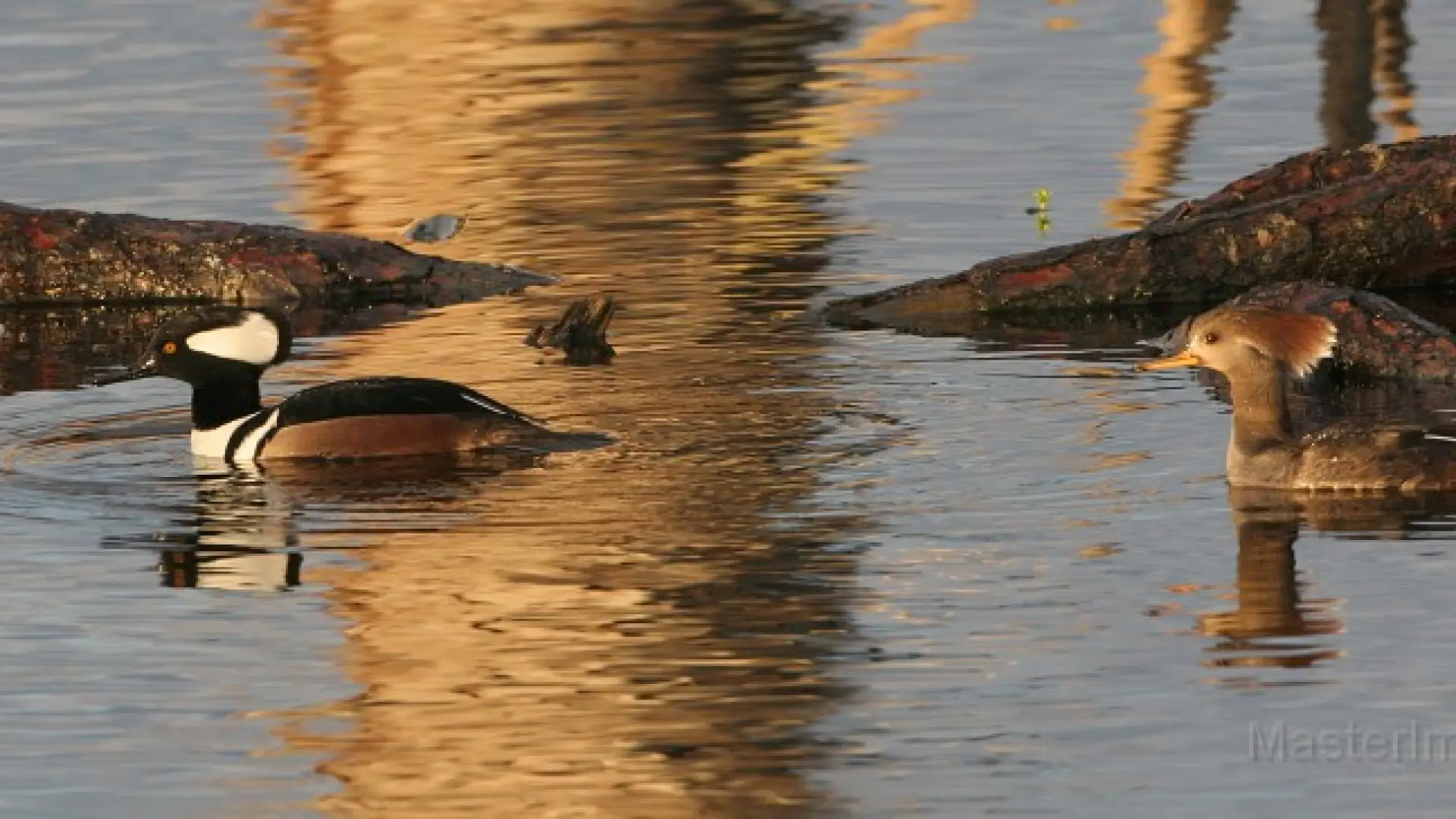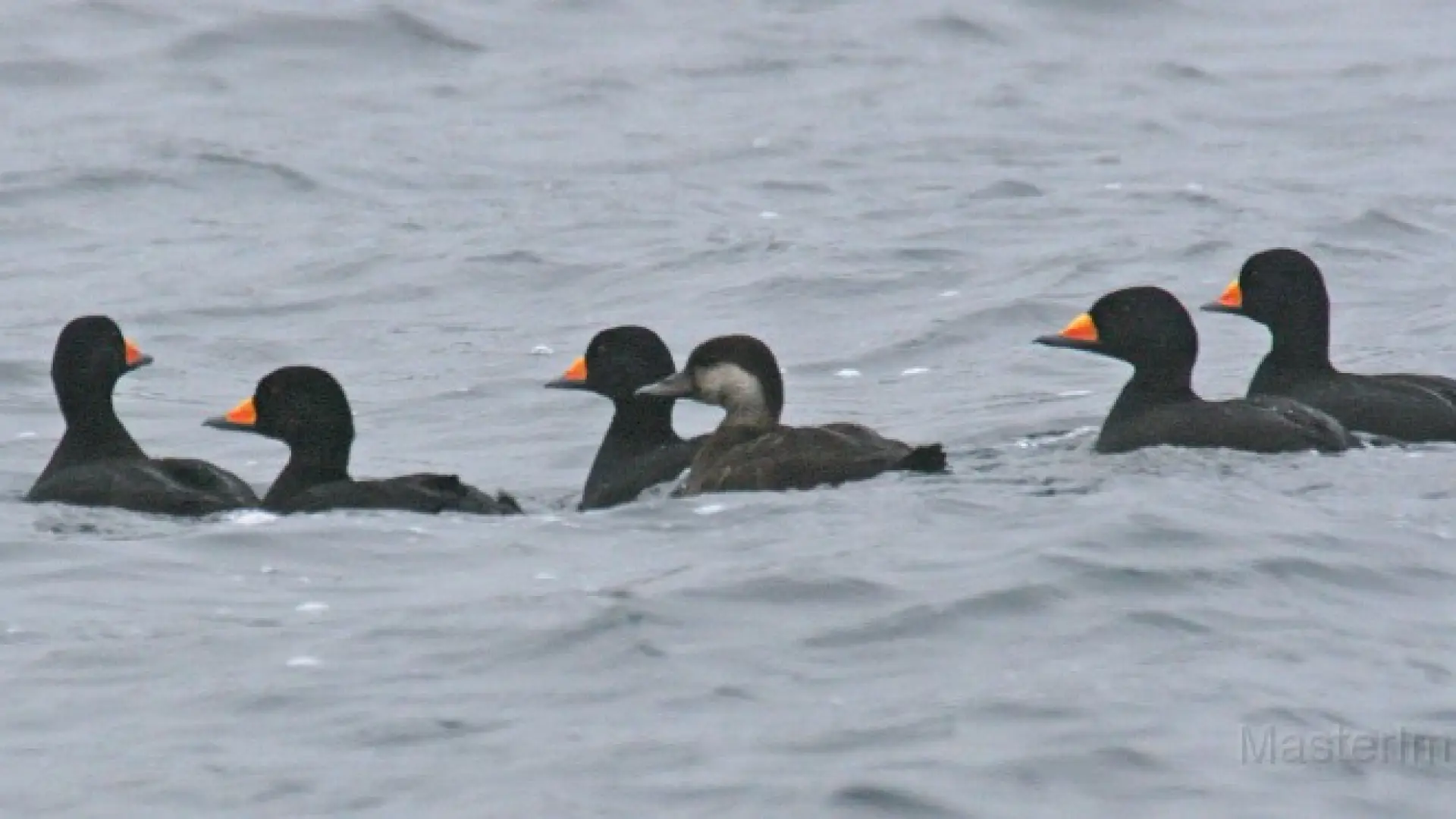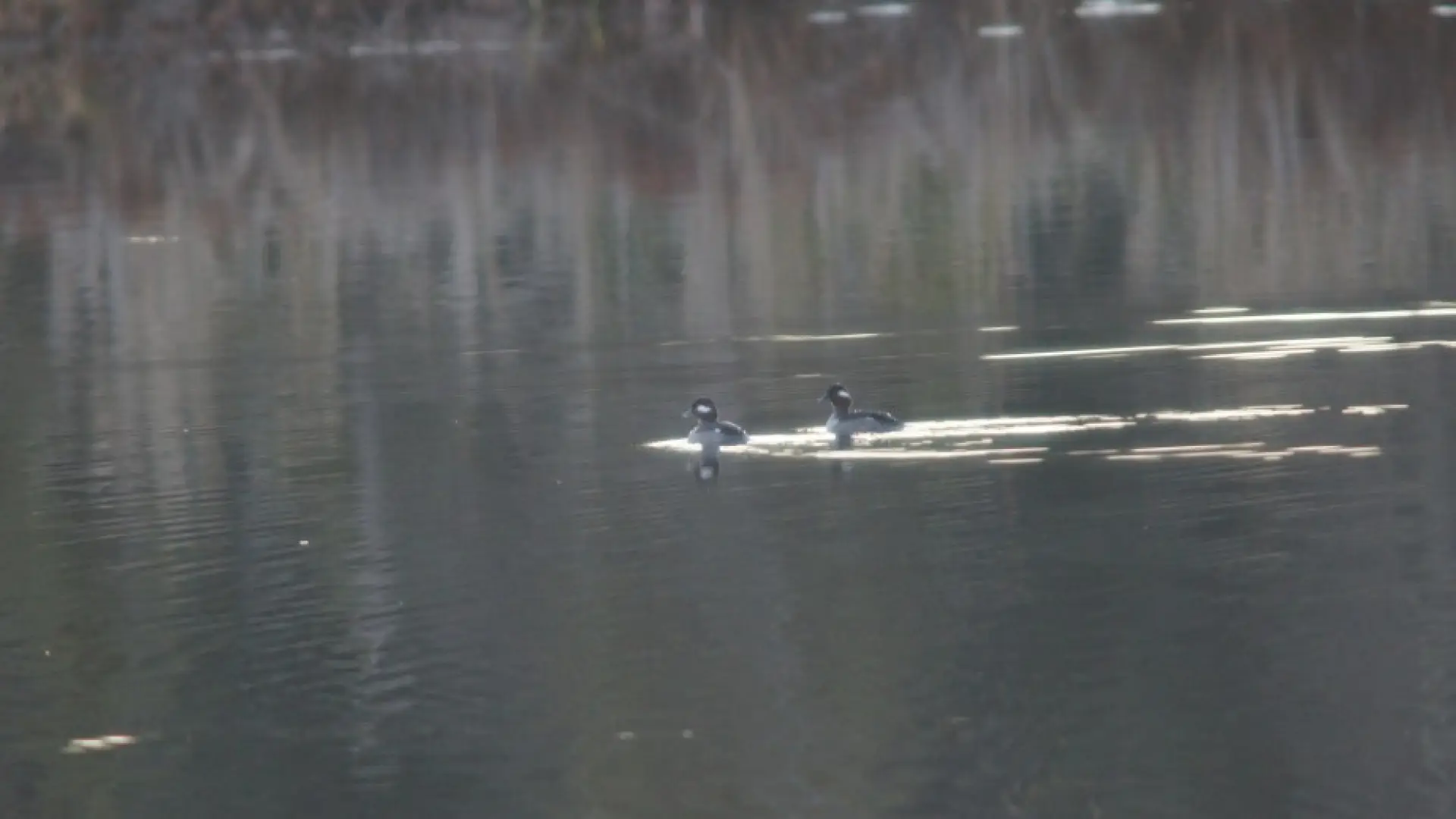
The backside of Lake Colby along the railroad tracks in Saranac Lake continues to be a good place to find ducks and other waterbirds. Today my walk started with a fly-by Cooper's hawk as a well as seven fly over Bohemian waxwings.
Both species were nice finds, and I headed down to the railroad tracks where like the day before, a large number of bufflehead stretched across the quiet backwater of the lake. The water was flat and smooth – even on the main body of the lake – rare for this time of year. I counted about sixty bufflehead and two female common goldeneye on the glassy surface. The day before I had found about seventy bufflehead and there were also two lesser scaup and two common mergansers to match the number of goldeneye.
That is the fun of consistently checking out any place where migratory birds pass through. Every day is different. As such I have discovered a nice diversity of ducks – twelve species! - during my regular walks at Lake Colby this fall. Add to that two species of goose – Canada goose and brant – and that's fourteen species of waterfowl. It makes me wonder what birds pass through less-easily-accessed Adirondack lakes without getting noticed.

My most diverse day came about two weeks ago – when I found eight species of ducks including mallard, common goldeneye, hooded merganser, bufflehead, lesser scaup, greater scaup, ring-necked duck, and black scoter. As an ornithologist and birder, any day that you find a wide diversity of any group of birds is exciting, and it was great to find such a wide array of ducks in such a small area. As a side note, I was also happy to find a flock of a dozen snow buntings feeding on the railroad tracks that day.
The following day, I found only four species of ducks, but I made up for it with a late pied-billed grebe – I've seen several at Lake Colby this fall – and a red-necked grebe on the main body of the lake. The red-necked grebe was an uncommon visitor that was just passing through, and it was the least common species I've found so far this fall at Colby.
Yesterday I went out with my camera in an attempt to snap a few photos, but ducks are wary and these birds generally kept their distance. It is particularly difficult to catch them by surprise at Colby because you are exposed and easily visible while along the railroad tracks. It probably also doesn't help that I have an exuberant and active Labrador retriever.

I hung around until evening when the ducks fly across the railroad track and out to the second arm of the lake (from the railroad tracks, the first arm if you paddle from the boat put-in). They seem to spend the night there or on the main lake, feeding in the backwater of the railroad tracks during the day. I tried to photograph the bufflehead flock flying past in the fading light, but only got several shots of streaky blurs. But it was a beautiful, cool evening, and a great time to be out. As I stood there, an adult bald eagle flew over in the growing shadows.
But there aren't many more evenings like that left. As the temperature cools, Lake Colby will soon freeze. And the ducks will move on to places like Lake Champlain or the coast. But while it is open, many ducks will be using Lake Colby either as a brief stopover or to stay for several days. And you never know what might show up – which is why you have to go find out for yourself.